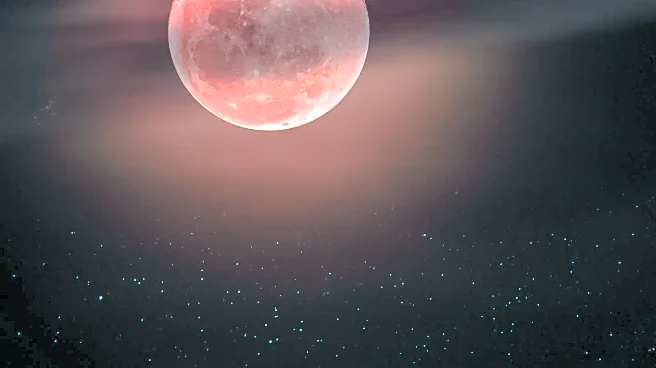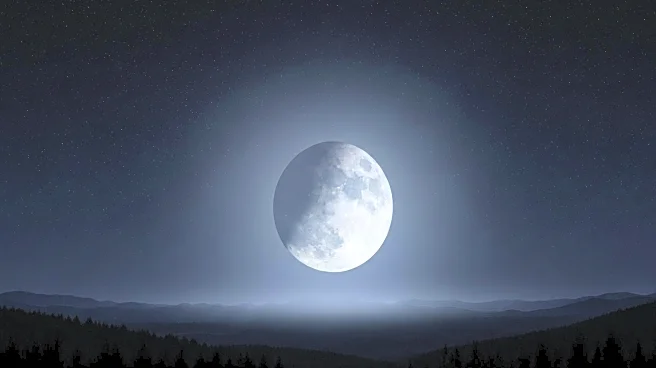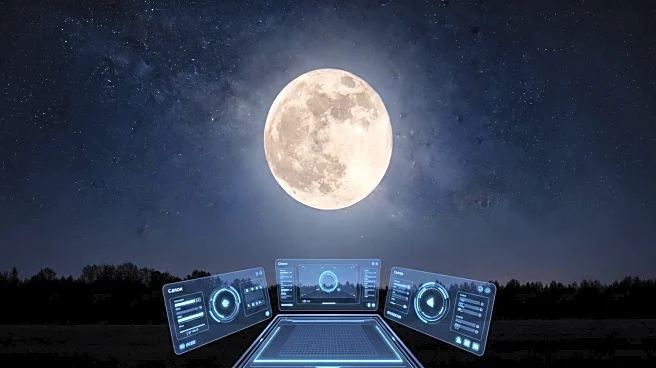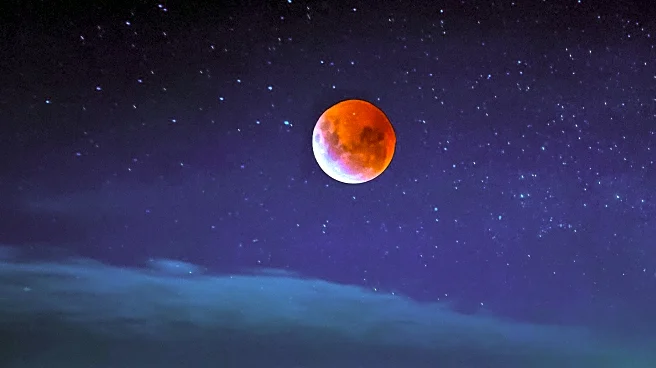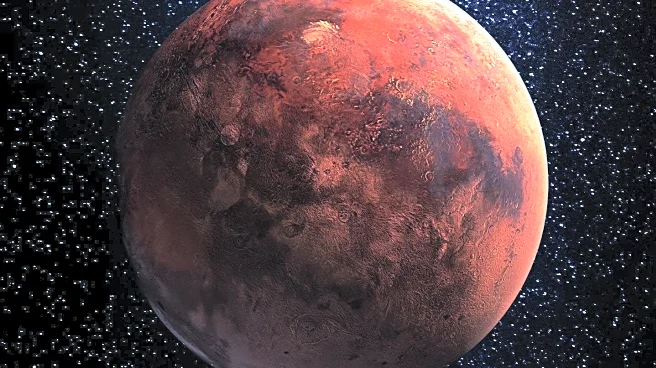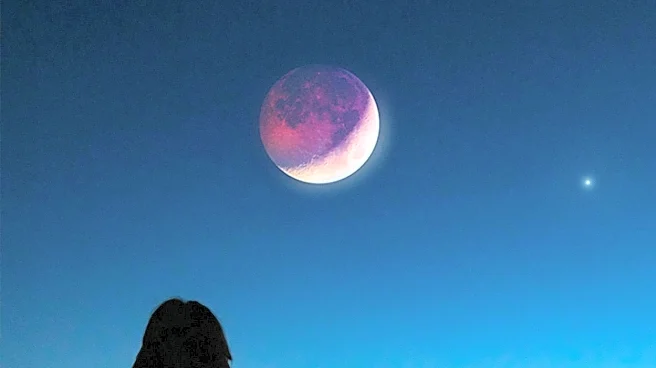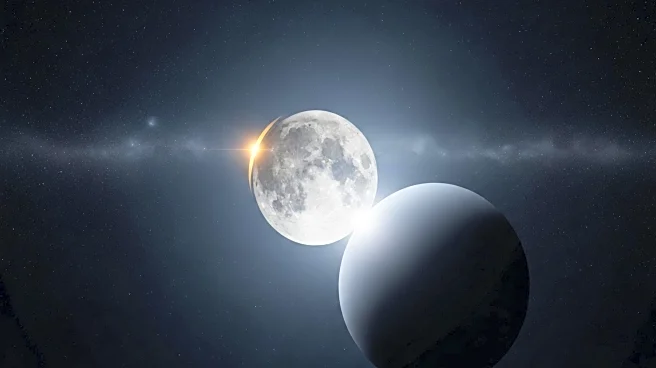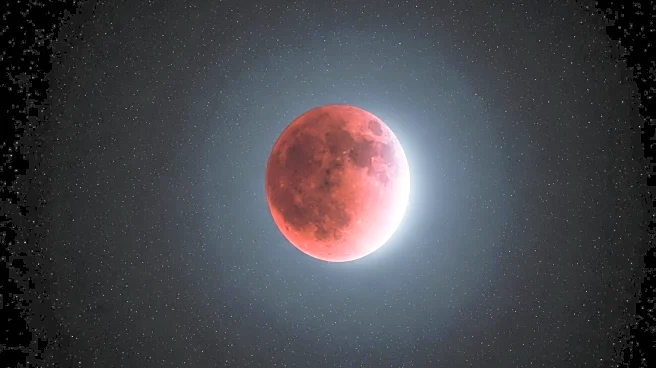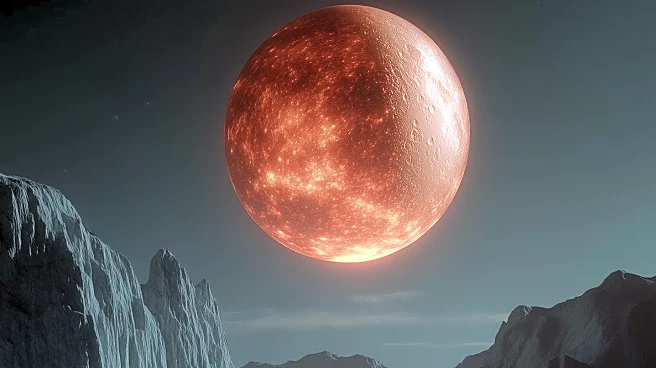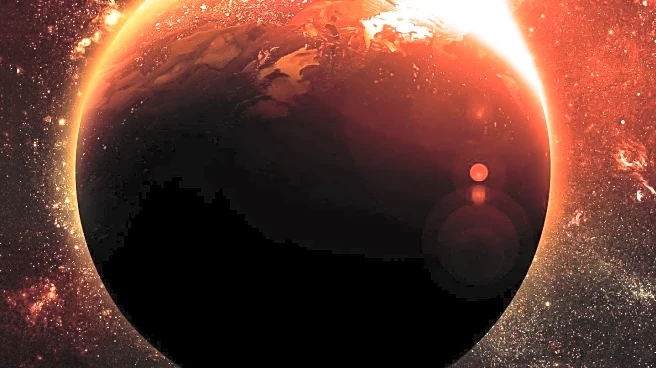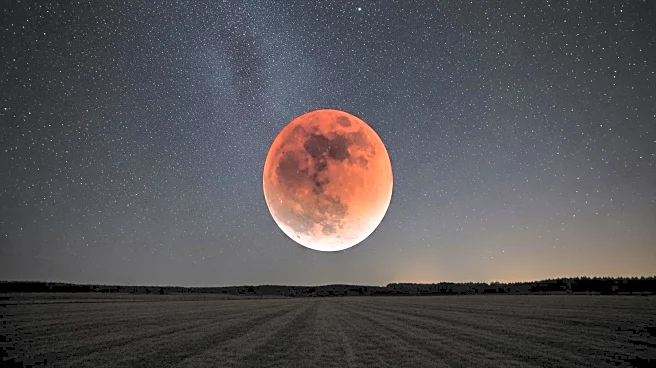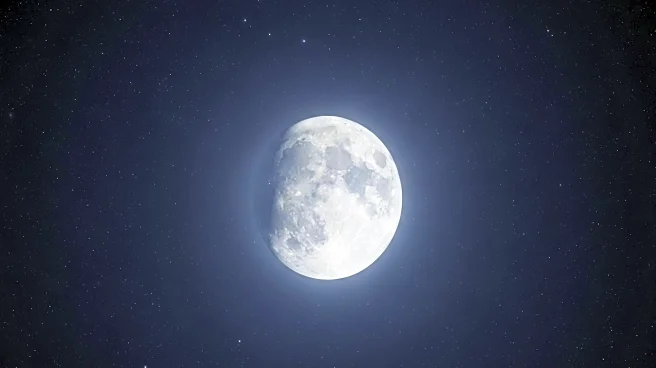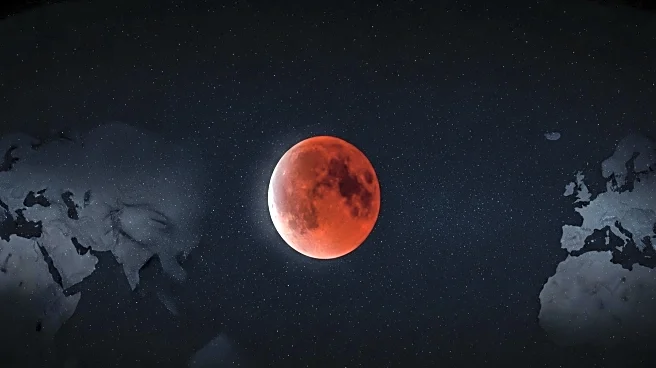What is the story about?
What's Happening?
A total lunar eclipse, also known as a 'blood moon,' is set to occur on September 7-8, 2025. This celestial event happens when the Earth positions itself between the sun and the moon, casting a reddish shadow on the moon. The eclipse will coincide with the 'harvest moon,' reaching its peak fullness before slipping into Earth's shadow. The total lunar eclipse will last for 5 hours and 27 minutes, with the totality phase lasting 1 hour and 22 minutes. Unfortunately, North America will not be in the path of totality, meaning the full eclipse will not be visible from this region. However, it can be viewed via livestream on platforms like Time and Date's website.
Why It's Important?
Lunar eclipses are significant astronomical events that attract the attention of stargazers and scientists alike. They provide an opportunity to study the Earth's atmosphere and its effects on light. The reddish hue of the 'blood moon' is caused by the Earth's atmosphere filtering sunlight, scattering blue and green light while allowing red and orange wavelengths to pass through. This event also highlights the interconnectedness of celestial bodies and offers a moment of reflection on the natural phenomena that occur beyond our planet. While North America will miss the direct view, the global interest in such events underscores the universal appeal of astronomy.
What's Next?
For those interested in witnessing the event, preparations for viewing parties or online streaming sessions may be underway. Astronomers and enthusiasts in regions within the path of totality, such as Europe, Asia, Australia, and Africa, will have the opportunity to observe the eclipse directly. Educational institutions and observatories might organize events to engage the public and provide insights into the science behind lunar eclipses. The next opportunity for North America to witness a total lunar eclipse will be eagerly anticipated by the astronomical community.
AI Generated Content
Do you find this article useful?
